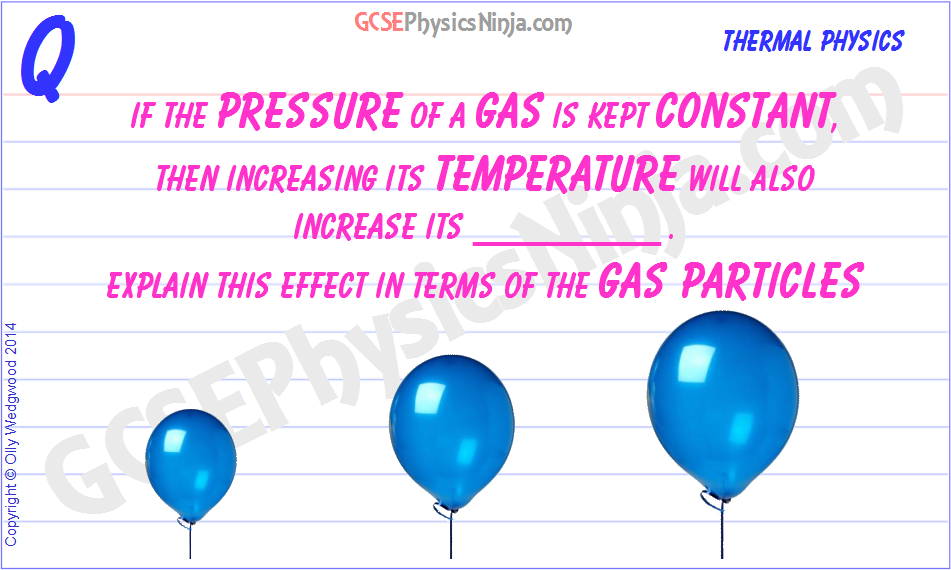
Heating a gas held at a constant pressure
A fun experiment to try at home is to blow up a balloon and tie it, then put it into a freezer so that it cools down. About 5 or 10 minutes later, take it out and you should see that the balloon has shrunk and reduced in volume.
After a few more minutes back at room temperature, the balloon will then expand back to its original size.
So why is this? Can we explain what's going on in terms of gas particles or molecules?
If the pressure of a gas is kept constant, then increasing its temperature will also increase its volume. This is called thermal expansion of a gas, and is a similar process to the expansion of liquids and a solids when they are heated (although their expansion is much less noticeable compared to a gas).
Let's explain this in terms of the motion of particles.
- Firstly, when you heat a gas, the particles (molecules or atoms) gain more kinetic energy.
- Faster moving particles hit the container walls more frequently.
- Therefore, the particles apply more force to the container walls, pushing them outwards*.
- So the volume of the gas increases.
Note that if you are asked to explain why a gas expands in volume when heated, you should explain each of these four points in this sequence. It is incorrect to say that the particles themselves expand - they don't! The atoms or molecules stay the same size, but the space they take up increases when they move around faster.
* The pressure of the gas has risen and so in the case of the balloon there is a pressure imbalance between the inside and outside. This imbalance means the balloon expands until the pressures equalise again.
GCSE Physics Keywords: Temperature, Pressure, Particles, Kinetic Energy, Collisions
